When it comes to turkey hunting, there’s nothing quite like the satisfaction of running a mouth call and making a longbeard fire back. But one of the most common questions I get is:
“What’s the best call for clucking and purring? And how do you do it?”
Well, let’s break it down step by step. Whether you’re brand new to running a diaphragm turkey call or you’ve been at it for years, understanding airflow, call cuts, and mouth positioning can take your clucks and purrs to the next level.
Finding the Right Turkey Mouth Call
First things first... There’s no one-size-fits-all call. Every hunter’s airflow is different. Some blow more air to the left side of their mouth, some to the center, and some to the right.
For example, my air naturally goes left. So I prefer calls like:
- Batwing cut with a left-side cut
- Dixie Combo with a left-side cut
- G-Baby, also cut left
But if your airflow is more front-and-center, a ghost cut, V-cut, or even a modified V-cut might suit you better.
The key is finding a diaphragm call that matches where your air naturally flows. When you do, you’ll get a cleaner front-end note and a raspier back end on your yelp, and that sets you up for more realistic clucks and purrs.
How to Cluck on a Diaphragm Call
A cluck is nothing more than a short, sharp burst of air. But it’s more than just popping your lips. Here’s how I do it:
- Use your diaphragm (down in your stomach) to push a controlled burst of air upward.
- As the air moves up, your tongue tightens against the reed and presses into the roof of your mouth.
- That quick stop of airflow creates that signature “cluck” sound.
It’s subtle. It’s controlled. And it doesn’t take much air at all.
How to Purr on a Turkey Mouth Call
A purr is even softer and more relaxed than a cluck. Here’s my secret:
Think about the gargle you make with the back of your throat, just like gargling water, but without the sound. Instead, you’re creating a vibration.
- Keep your tongue lightly against the reed.
- Let that little “gargle” vibration roll off your diaphragm.
- Adjust the shape of your mouth to act as a sound chamber, making the tone softer or fuller.
When you get it right, it sounds like a soft, contented turkey feeding; perfect for coaxing a bird those last few critical yards.
Why Mouth Shape Matters
Your mouth is your sound chamber. Slight changes in how you open or close it will change the tone of your call.
- Mouth open wide = louder, more open sound
- Mouth slightly closed = softer, more mellow tone
Play with it until you find what sounds like a real hen.
Practice Makes Perfect
Like I always say, now is the time to practice. Off-season, summer, fall, whenever you’ve got downtime, that’s when you fine-tune your calling.
Everything you do on a turkey diaphragm call—yelping, cutting, clucking, purring—comes from your diaphragm. It’s the same way you’d run a duck call. Control the air, control the call.
Common Mistakes to Avoid
- Too much air: Blowing too hard will make your calls sound unrealistic.
- Lips popping: Clucks come from controlled bursts of air, not smacking your lips.
- Wrong call cut: If your airflow doesn’t match the call, you’ll fight it the whole time.
Find the right cut, slow down, and let the call work for you.
Ready to Sound Like a Real Hen?
Hopefully, this sheds some light on how to cluck and purr on a turkey call. There are a lot of ways to do it, and everyone develops their own little style, but these fundamentals will get you there.
If you’ve got questions, don’t hesitate to reach out. I’m always happy to help. And if you’re looking for handmade diaphragm calls that won’t fail you in the turkey woods, check out our lineup of Houndstooth Mouth Calls.
Now get to practicing! Those old longbeards won’t know what hit ‘em. 🦃


